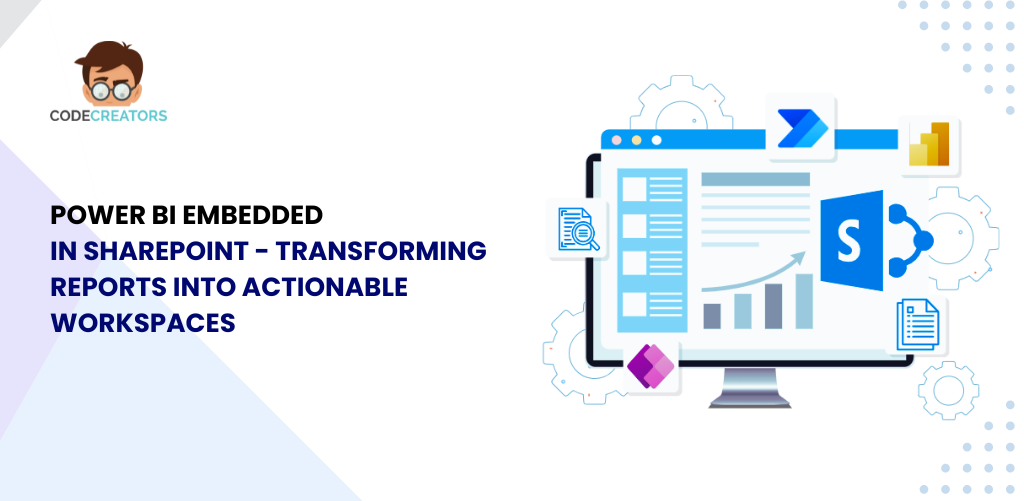Microsoft Project Online: A Comprehensive Guide for Streamlining Project Management Success

Execution of successful projects is no longer a luxury in the business world today: it is a must for continued organizational growth and survival. Not only that, but the organizations have to manage projects amidst increasing demands from stakeholders who want to have their projects rolled out on time, within budget, and at the highest quality standards, all while navigating interdependencies, limited resources, and strongly changing market conditions.
Powerful project management tools such as Microsoft Project Online are being used more frequently by organizations to tackle this challenge. This is a cloud-based project portfolio management (PPM) solution to improve project governance and project collaboration to achieve higher levels of project outcomes.
What is Microsoft Project Online?
Microsoft Project Online, is a cloud-integrated solution that can be evolved into a central place of all activities around a project. It has capabilities and features to enable an organization to plan, carry out, and track project processes. Integrated within the wider Microsoft 365 portfolio, it works seamlessly with other increasingly prevalent applications such as Word, Excel, PowerPoint, Teams, and SharePoint thereby bringing planning within reach of teams.
Microsoft Project Online offers a way for users to do any project management job, ranging from scheduling to budgeting, resource allocation, and performance analysis. It’s simple user interface and powerful capabilities accommodate corporations and teams of all sizes from a single small office to a global enterprise. It supports a unified and efficient workflow that improves productivity and alignment with corporate goals. The work is being performed in the cloud, meaning one can get all data from anywhere across the globe while receiving real-time updates too.
Key Features of Microsoft Project Online
1. Robust Project Planning and Scheduling Capabilities
- Creating Project Roadmaps with Detail: Development of exhaustive, complex project plans including a task, subtask, dependency, and an associated deadline and resource assignment.
- Visual Project Management: Provide a tool for dynamically drawing Gantt charts, network diagrams, and other interactive visuals to make project timelines, critical paths, bottlenecks, and progress easily visualized and real-time tracked.
- Advanced Scheduling Techniques: Applying advanced techniques like lead and lag time, constraints, etc., to model relationships between project activities.
- What-if analysis and scenario planning: Implement a thorough what-if analysis for different possible scheduling scenarios to define the impacts of delays resulting from resource unavailability, disruption of supply chains, or change in project scope on the schedule, enabling the project manager to identify possible risks in advance and develop just-in-time contingency measures and improved decisions for proper steering in projects.
- Risk Management Tools: Introduce features related to risk sensitivity in the project schedule so that risks can be identified and assessed along with possible mitigation. For instance, a user can define risk events, associate probabilities and impacts, produce mitigation plans, and track their progress in implementation.
2. Comprehensive Resource Management
- Effective Resource Allocation: Allot the work to the right teammates and track the availability of all team members as well as work towards resource allocation to maximize productivity and reduce any conflict.
- Resource Leveling and Smoothing: Apply resource leveling and smoothing techniques to achieve balance in workload, elimination of overall location, and the creation of a situation in which workers are neither overworked nor underutilized.
- Cost Control and Budgeting Management: Establishing resource costing, forecasting project cost, and monitoring variance in budget controls.
- Optimized Resource Usage: Bring an underutilized couple into higher-prioritized projects to maximize the resources and minimize project delays.
- Timesheet Management: A timesheet submission and approval process for time used on projects and hence improved project cost forecasting.
- Resource Allocation Optimization: Analyzing such sources developed by intelligent algorithms for resource allocation optimization, can include such parameters as skill sets, their availability and cost, and even employee preferences to find the best solution for the resources allocated.
3. Enhanced Collaboration and Communication
- Option for Confused Team Activity: Allowing seamless connections between the people involved – teammates, stakeholders, and project managers – through shared project plans with real-time updates and integrated communication.
- Ensure Direct Communication and Knowledge Exchange: Internal communication facilities such as the creation of team sites, discussion boards, and instant messaging to support internal communications with all the stakeholders on updated project information.
- Central Repository for Project Documentation: All documents of projects like plans, reports, presentations, meeting minutes, communication logs, and project deliverables are centrally deposited in a repository affecting easy access to vital information while minimizing information siloes.
- Stakeholder Management Improvement: Keeping stakeholders updated regularly on project milestones, addressing concerns raised, and managing their expectations.
- Improved Channels of Communication: These include a variety of channels, including video conferencing and online meetings, which are important in facilitating good communication and stakeholder involvement.
4. Powerful Project Portfolio Management Capabilities
- Portfolio Assessment and Ranking: Analyze the portfolios of projects to identify trends, risks, and make informed decisions about allocating resources and prioritizing projects.
- KPI Tracking: Monitor key performance indicators (KPIs) such as project progress, budget utilization, resource allocation, customer satisfaction, and return on investment to carefully trace projects, see which parts are lacking, and make necessary adjustments based on findings.
- Reporting and Analytics: Avail personalized customizable reports and dashboards for real-time insight into project performance, discovery of evolving problems, and informed decisions on project direction and resource allocation.
- Portfolio Prioritization Tools: These can include weighted scoring models and benefit cost analysis for portfolio prioritization that can be used to select and prioritize projects that can be aligned with strategic business objectives.
- Predictive Analytics Usage of History: Run project forecasts, discern risks, and set optimized resource-allocation plans with previous actions and machine-learning algorithms with the help of predictive analytics.
5. Seamless Integration with Microsoft 365 Ecosystem
- Leverage Existing Investments: Integrate into other Microsoft 365 applications such as Word, Excel, PowerPoint, Teams, and SharePoint; build upon existing investments in the Microsoft ecosystem.
- Streamlined Workflows: Streamline workflow procedures by integrating project management seamlessly with business processes such as issues of communication, collaboration, or documents management.
- Improved Productivity: Productivity will be maximized as the silos in data are taken down, allowing real-time data across applications to be accessed and manual data entry eliminated.
- Better Information Sharing: Improve information sharing among departments.
Benefits of Using Microsoft Project Online
- Better Project Visibility: Get real-time insights into project progress, detect potential roadblocks and proactively address them to minimize project delays and ensure success.
- Improved Collaboration and Communication: Seamless collaboration will be created among team members, stakeholders, and project managers with better communication and sharing of information, thereby increasing cohesion in the team.
- Improve productivity: Project management would be more streamlined, automated, and fuzzy even with time-hogging jobs like the entry of the timesheet and reporting status updates, meaning an entirely different picture in the overall productivity and efficacy of a team.
- Effective Use of Resources: The resource allocation will ensure that required resources will not be applied for over-allocation and will be available for effective and efficient use.
- Best Results in Projects: Timely and within-budget closure of projects meeting quality specifications results in ultimate customer satisfaction while serving critical business needs.
- Data-Based Decision Making: Make real-time project performance data-driven decisions that bring necessary adjustments to project plans ahead of other changes.
- Organization Agility: Capability of responding to any development or change such as resource reallocation to meet changes in business needs and market conditions.
- Increased Customer Satisfaction: The time-maximized and quality-conforming projects thus bring a lot more satisfaction and loyalty on the part of customers.
- Reduced Project Risk: Through risk management tools and analysis, potential project risks can be identified and mitigated proactively before the project begins.
- Enhanced Organizational Competitiveness: Better project management with high-quality results will therefore make the organization more efficient and keep them competitive for an extended period.
- Return on Investment (ROI) Enhanced: Delivery of projects on time as well as within budget improves the ROI of organizations and maximizes the value of their respective portfolios of projects.

Conclusion
Microsoft Project Online is among the most versatile project management solutions, empowering organizations to standardize their project management processes, increase collaboration, and accomplish better results concerning their projects. The power of Microsoft Project Online hinges on the fact that it provides organization with the capabilities needed to drive its project success rates forward toward strategic business objectives.
The best part of it is that it fits all types of industries from IT to construction, marketing, and finance because of its innate interface and customizable features. It allows project managers to track their milestones and risks as well as ensure timely delivery of deliverables. It provides real-time analytics and reporting, from which actionable insights can be drawn, hence keeping decision-makers aglow and nimble. Making resources and strategies of organizations effective at work, too, Microsoft Project Online enhances innovation, collaboration, and adaptability to rapidly changing business needs.
Sherry Rajani, is a tie-loathing adventurer and troublemaker who believes in turning ideas into reality. Even though his experience is primarily in Microsoft Cloud and On-Premise Solutions, Sherry has also lead teams building Custom ERPs, Mobile Applications, Data Management and other solutions.
After working in the Toronto Technology Industry for a while, Sherry started his own Technology Consulting Firm, Code Creators Inc., specializing in the Office 365 Stack ranging from SharePoint Online, the Power Platform, PowerBI and Microsoft Teams.



